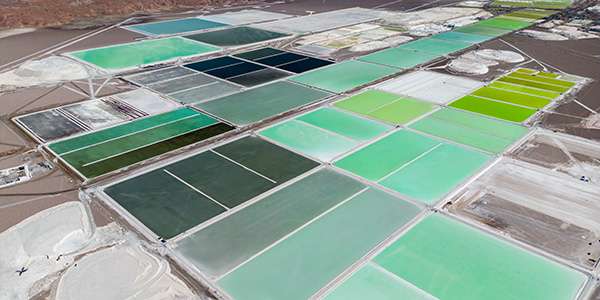Introduction to Lithium Brines:
Lithium brines are highly concentrated salt solutions that contain significant amounts of lithium, typically found in underground reservoirs or saline lakes. These brines are extracted and processed to isolate lithium compounds, primarily lithium carbonate and lithium hydroxide, which are essential for various applications, including battery production.
Methods of Lithium Extraction from Brine:
- Solar Evaporation Brine Extraction
Solar evaporation brine extraction involves pumping brine into large evaporation ponds where solar energy naturally concentrates the minerals as water evaporates. This cost-effective and eco-friendly method is commonly used to extract minerals like lithium, although it requires significant time and extensive land areas
Direct Lithium Extraction (DLE) from Brine
Direct Lithium Extraction (DLE) is an innovative technology designed to extract lithium directly from brine solutions. DLE, on the other hand, leverages advanced filtration and separation technologies to isolate lithium from brine more efficiently and with a smaller environmental footprint.
Problems faced by lithium manufacturers in lithium extraction from brine
Brine sources include underground lakes or Salars, hot geothermal reservoirs and brines associated with petroleum production. Typically, brines contain a mixture of minerals, including iron, magnesium, potassium, calcium, sodium, and lithium. Using various techniques, lithium chloride can be extracted from the brine, purified and then processed into other forms for battery production.
Lithium-Ion batteries have strict purity requirements for the materials used in their manufacture. Impurities can lead to poor charging performance including reduced vehicle range of operation, more frequent need to charge, problems with batteries starting at colder temperature and in some extreme cases to the batteries catching on fire. A major issue with the current Lithium conversion practice is reliable operation in producing the high quality Lithium products from varying degree’s of impurities & high variance in concentration of Lithium.
Improved filtration and separation can play an important role in improving both the process reliability for producing consistent high purity products and also for improving the product yields, reducing product re-work, and reducing operation costs.
Pall Corporation; The Filtration Expert in Lithium Extraction from Brine
Pall Corporation plays an important role in the process of Lithium extraction. Critical locations for purification of contaminants in the lithium brine processing plant are identified below
Filtration locations in the Lithium Carbonate Process
| Filter | Filtration Value | Separation Product |
|---|---|---|
| 1 | Removal of silt, precipitated salts from raw brine - protect solar ponds from contamination | 20-40 Micron Filters |
| 2 | Removal of silt, precipitated salts from concentrated brine - protect Lithium Carbonate plant from contamination | 10 Micron Filters |
| 3 | Bulk removal of percipitated salts - high solid concentrations | Automated regenerable cartridge |
| 4 | Protect Ion Exchange (IX) resin and crystallizer from carryover solids | 1 - 5 Micron Filter |
| 5 | Remove trace solids and Ion Exchange resin fines before crystallizer | 1 Micron Filter |
| 6 | Collect Lithium Carbonate product | Automated regenerable cartridge |
| 7 | Protect RO filtration unit from fouling | 10 Micron Filters |
Learn more about the solution that can support your applications or contact an expert today.
For more information on improving the efficiency of your processes, contact our team of filtration experts.


